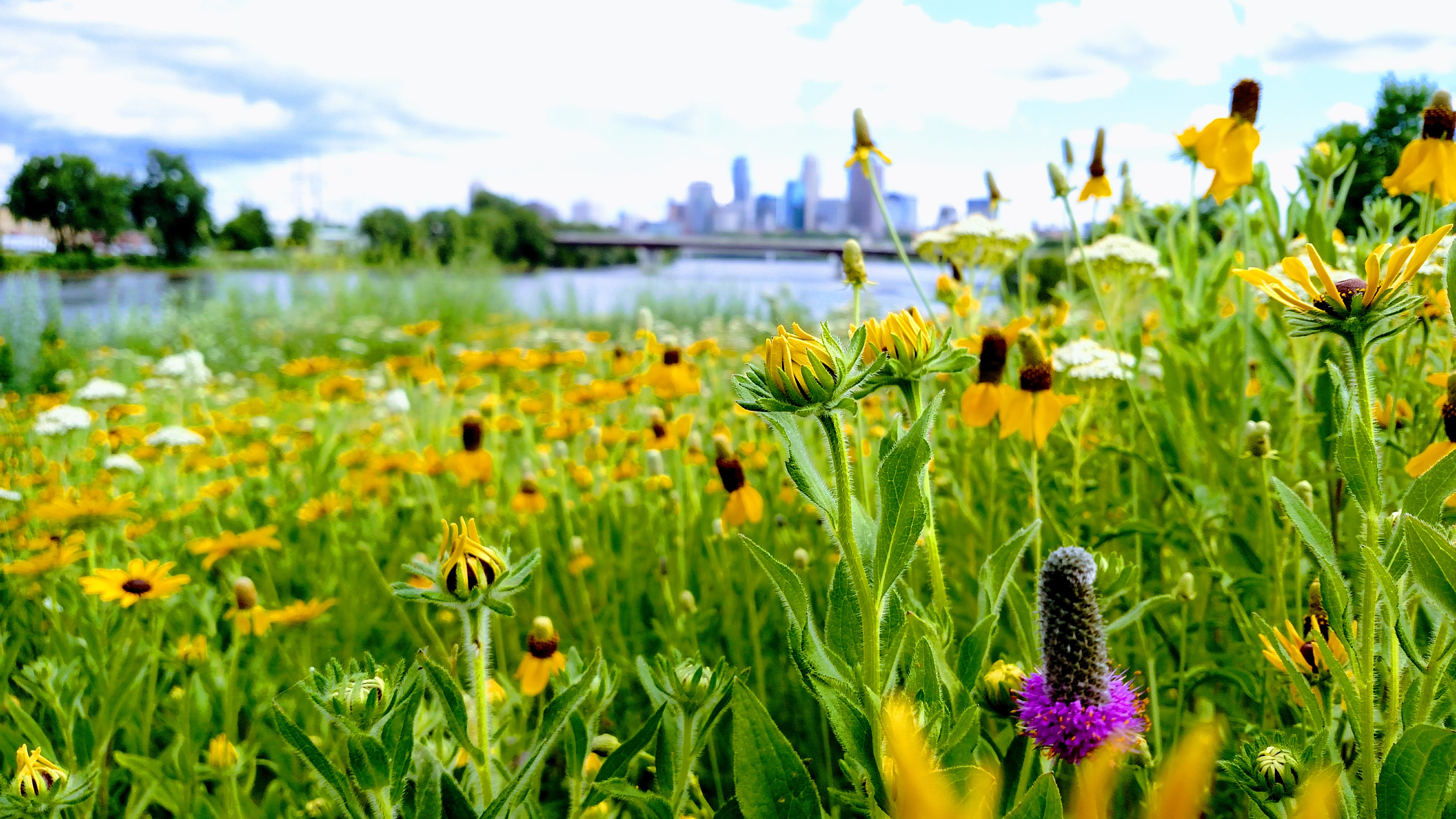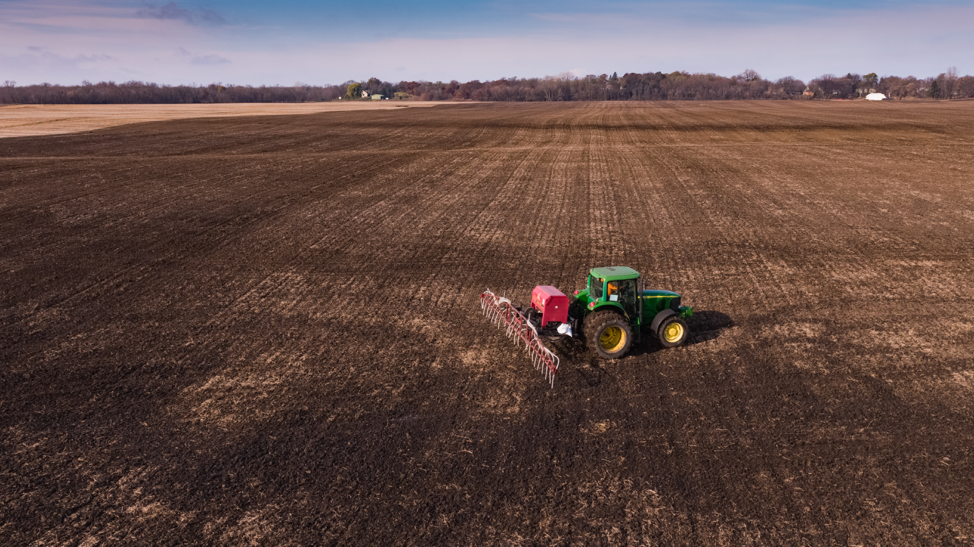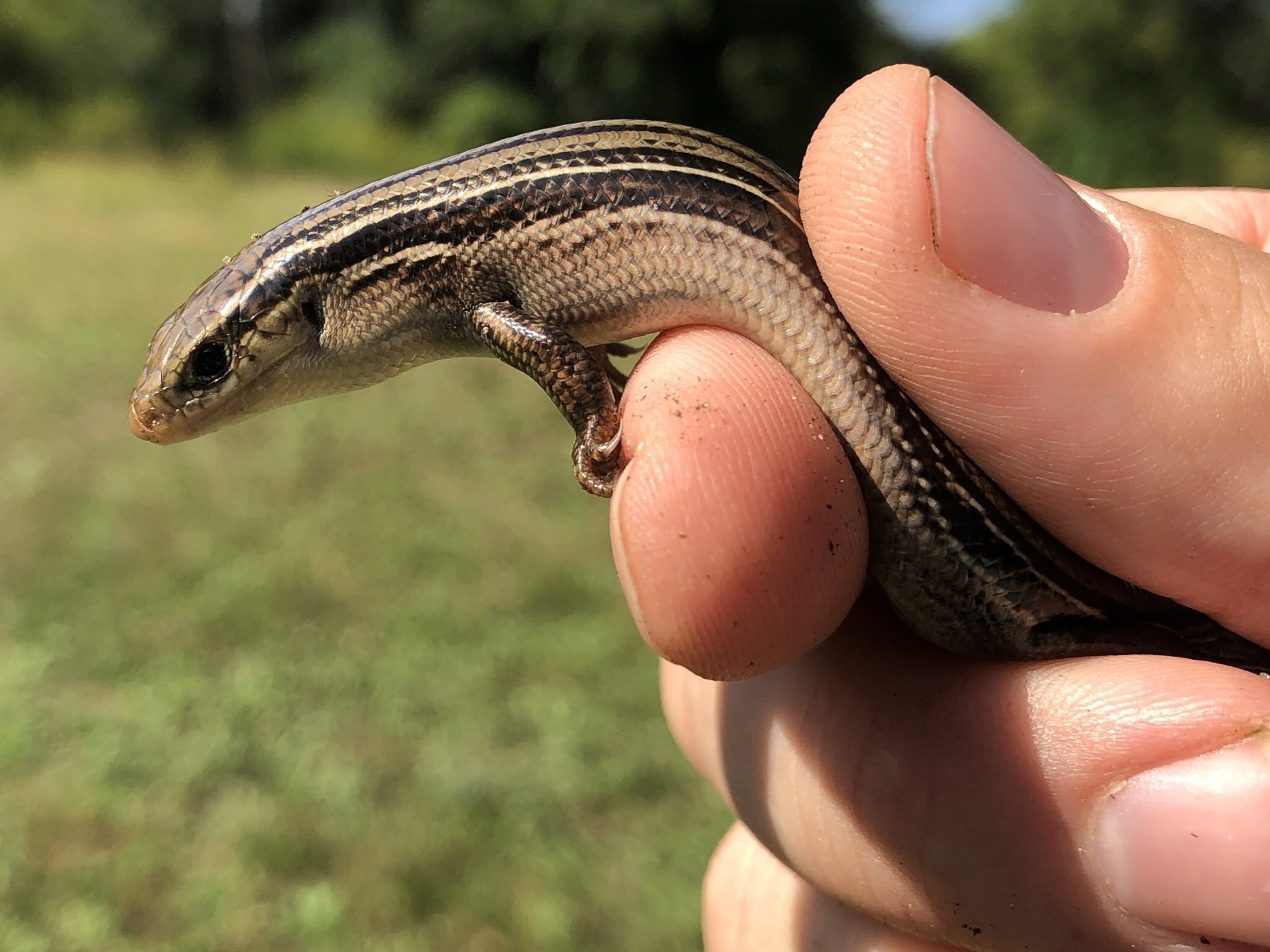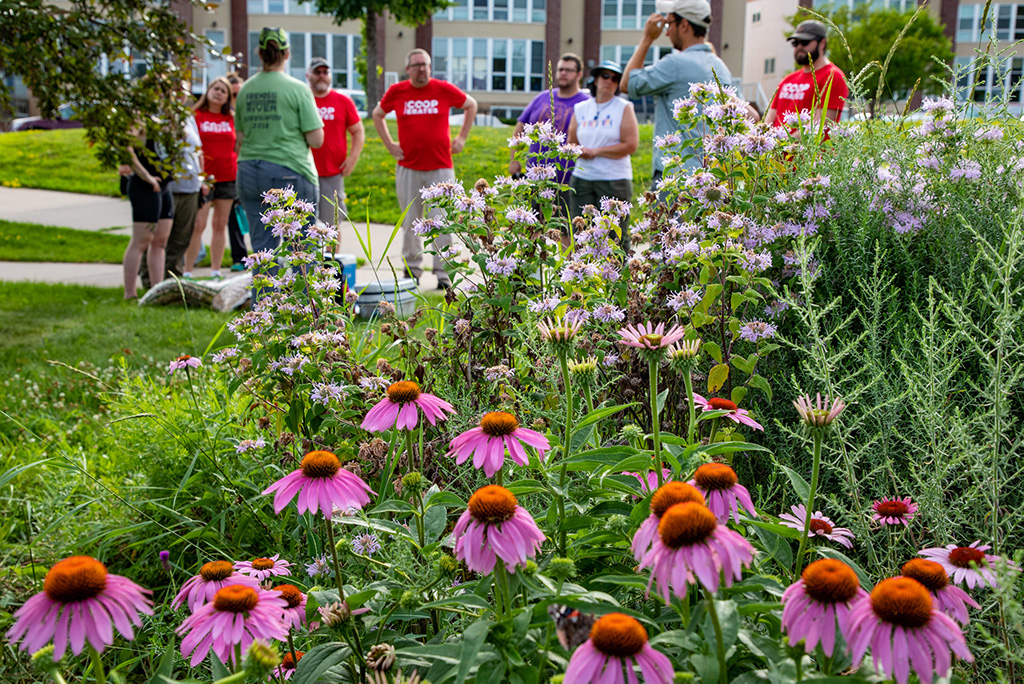Ecological restoration: A practice in patience

In 2015, we started ecological restoration at Ole Olson Park in Minneapolis. While a diverse prairie blooms there now (as you can see here), the first year of the project didn't look quite so stunning.
Have you ever been to Orvin "Ole" Olson Park in North Minneapolis? If it's been awhile, the park might look quite different than what you remember. What was once a railyard, then a paint factory, a turfgrass field and then a choked thicket of invasive plants, Ole Olson is now a restored prairie in full bloom.
The change from railyard to park happened over the span of more than a century. And while the conversion of the site from turfgrass and invasive plants to native prairie has only been in the works since 2015, this transformation back to natural habitat is a long-term process.
In the world of ecological restoration, changes don't happen overnight. And sometimes, to create a thriving and diverse habitat for wildlife and for water quality, things get a little messier before they get better.

This is what Ole Olson looked like during restoration. During this stage, we converted turfgrass to a mulched demonstration planting garden and prepped bare soil for seeding. Later, we removed invasive trees and shrubs (left) to make room for more prairie.
Why restoration gets messy
The actual process of ecological restoration may look different depending on the goals, habitats involved and scope of work. But in the Twin Cities metro area, we often spend a year or more prepping a site for new native seeds and plants by removing existing, often invasive, vegetation.
That means you might see a lot of dead plant material, cut stumps, or short vegetation for a while.
In the metro area, a long history of land-use change, development, pollution and overuse means many of our natural areas are heavily degraded. Establishing self-sustaining native ecosystems can take years of hard work and persistence (thanks, volunteers!) before they take hold, look full and vibrant, and provide the long-term benefits that are our ultimate goal.
Prairie restoration can be especially slow-going. Those iconic golden blooms and grasses waving in the breeze may not become a reality until two or three years after we seed a site.
 Before FMR began restoring Elk River's William H. Houlton Conservation Area in the fall of 2017, rows of soybeans lined the land during the growing season. (Photo by Tom Reiter)
Before FMR began restoring Elk River's William H. Houlton Conservation Area in the fall of 2017, rows of soybeans lined the land during the growing season. (Photo by Tom Reiter)

Here's what the land looked like as we seeded it with native prairie mix for the first time that fall — not exactly picturesque. But scroll down to see what this turned into the next spring. (Photo by Tom Reiter)
Two steps forward, one step back?
Sometimes when we're in the early stages of removing existing plants (usually invasive), concerned citizens wonder if the restoration process actually takes us two steps backward. Watching contractors cut down green plants or pull out purple flowers might seem like habitat destruction rather than creation. We understand that people who love the land we work on might be concerned for the wildlife or the nature of the space.
But in the long game, these steps will actually make the site healthier.
Plants like buckthorn, burdock and spotted knapweed all have documented negative effects on water quality, native plants and wildlife.
Their shallow root systems don't hold soil in place, creating erosion and water quality problems, especially on slopes. They outcompete native plant species, in turn pushing out the insects, birds and other wildlife that depend on those native plants. They can also directly harm wildlife, through interaction with the plants themselves (like burdock burs trapping bats) or through the chemicals they produce. (For example, buckthorn emits a chemical toxic to amphibian embryos.)
Taking the long view
By removing these invasive species and replacing them with native plants, we can restore the ecology of the site.
Seeding and planting native species creates stable groundcover and deep root systems, provides pollinator resources throughout the growing season and offers food and shelter for other wildlife.
After two years of restoration work, 180 acres at the William H. Houlton Conservation area has bloomed into prairie. Click play on the video above to dive down into the diverse array of native grasses and wildflowers that now provide habitat and groundcover year-round, replacing summer soybeans and winter bare soil. Because of our restoration project, soil erosion into the Mississippi River off this land has reduced from 1.4 tons per year to less than 0.016 tons per year! (Video by Tom Reiter)
It can still be hard to see changes in a place that you have come to know and love as it is. You may find some invasive plants beautiful. You may appreciate a dense wall of buckthorn for the sense of seclusion it provides or for the chirping birds you hear in its thicket.
But we weigh the limited benefits of invasive species with the larger damage they do to the ecosystem. Robins and other generalist birds will still use areas heavily invaded by buckthorn, but many specialist birds are pushed out. Plus, nests in species like buckthorn and honeysuckle are much more susceptible to predation.
By removing that buckthorn, we may temporarily remove some nesting habitat. But our management plans prioritize replanting shrubs and trees that will grow and provide food sources and nesting habitat for a much larger suite of species.
Checking our work

FMR ecologists and our wildlife consultants, along with local Elk River High School students, have found reptiles, amphibians, and pollinator species that need the newly blooming prairie and restored wetland at Houlton to survive. We found the Minnesota-native prairie skink in the prairie's first year. (Photo by Chris Smith)
Since the field of ecological restoration is relatively young — it essentially became its own discipline in the 1980s — we make it a point to stay up to date on the latest research on best practices.
And we do a little of our own. We regularly monitor the use of our sites by pollinators and other wildlife to make sure we're getting the results we hope for. From monarch butterflies to reptiles and amphibians, we want to know how our restorations are affecting populations of native fauna.
In many cases, our recent monitoring efforts have shown positive trends in use of our restoration sites by wildlife. Analyzing over ten years of data from breeding bird surveys, we found that at sites where FMR has completed prairie restorations, starting from either cropland or old field, there have been steady increases in the number of bird species and the number of Species of Greatest Conservation Need in the years following restoration.
But like the restoration process, the return of wildlife species can take a long time. It may take years for species to re-colonize once-degraded sites, which is why monitoring these sites is so important.
The data we collect also influence our management of specific sites. We might alter what we plant to attract different species or create focused habitat for rare or imperiled species that use the land and waters where we work.
Convinced? Here's how you can help

Get your hands dirty and restore our natural areas with us! Find our full events calendar here, or learn more about group volunteer opportunities. (Photo by Tom Reiter)
Ecological restoration isn't just for organizations like FMR. Everyday river-lovers can do their part, whether through volunteering with local organizations like ours or by taking steps to restore habitat in their own yard.
Recent studies show that yards with greater than 30% invasive plant cover see large declines in native insect populations, resulting in significant declines in bird populations. That means we have the power to make a difference for wildlife right in our own backyards.
By following invasive plant removal guides and buying native seed and plant material from Minnesota suppliers to replant, you can start to restore crucial habitat.
And of course, we'd love for you to join us at our restoration volunteer events.
However you decide to support the restoration of our natural areas, your persistence, patience and hard work will have lasting benefits for wildlife and water quality.